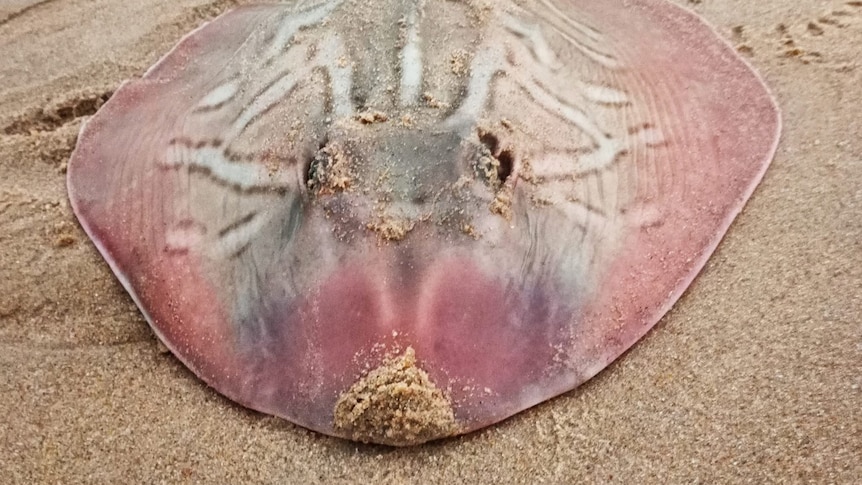By Josh Brine
Flinders University researchers have thanked Adelaide residents who responded to a call-out for specimens of sharks and rays as the state’s ongoing harmful algal bloom causes a deluge of marine deaths along Adelaide’s coastline.
According to the Great Southern Reef Foundation more than 7,300 marine deaths across 390 species have been logged as part of the SA Marine Mortalities project on the iNaturalist database since March.
PhD student and Flinders University Southern Shark Ecology Group member Chloe Roberts has spent much of the past week collecting dead sharks and rays from Adelaide’s beaches.The group put out a call last weekend asking Adelaide’s beach-going public for help in retrieving specimens and to store them in their freezers until they could be collected.
Ms Roberts is still visiting as many beaches as she can each day to find specimens of the variety of rays and sharks washing up.
Southern fiddler rays had been one of the most affected species.
Ms Roberts said the group had also seen many juvenile Port Jackson sharks, as well as shovel nose rays and wobbegongs.
“There’s a really wide range of species affected but some species seem to be quite high numbers affected,” Ms Roberts said.
She said white pointer sharks that washed up were usually collected by fisheries officers.
Local extinctions expected from recurring blooms
It was expected that blooms would recur more often which could be devastating for the local environment.
“We’re going to start seeing really long-term declines in these animals.
“And then I think we could probably unfortunately expect some sort of local extinctions, animals disappearing from our coastline unfortunately.”
Ms Roberts said the Gulf St Vincent and Spencer Gulf were already vulnerable to climate change because they were shallow and there was limited mixing of their waters with the rest of the ocean.
The Flinders team will now undertake necropsies and toxicology testing on the dead sharks and rays to learn how they died and why some species are more affected than others.
“It’s really difficult because the bloom and the algae can affect animals in so many different ways,” Ms Roberts said.
“It can take oxygen out of the water, it can clog the gills of the animals, it releases toxins that can have a range of different effects.”
Thousands of deaths
The numerous marine mortalities along the Adelaide coastline are the latest wave of deaths to become visible to the public since the harmful algal bloom was first identified in March.
Marine ecologist Janine Baker from the Great Southern Reef Foundation said amongst the thousands of deaths were 24 species of sharks, rays, skates and stingarees.
Ms Baker asked people to keep logging their findings to help future research.
“It is important for people all over South Australia in bloom-impacted regions provide visual information,” she said.
West Lakes worries
Preliminary testing earlier this week indicated that the algal bloom is also now present in West Lakes with locals expressing concern for the popular fishing spot.
Teenagers Ethan Roberts and Chace Wallis from Adelaide’s western suburbs both fish at West Lakes regularly, mainly catching salmon, bream and the occasional mulloway.
“We love our fishing. We’re hoping the algae bloom doesn’t last too much longer,” Chace said.
They visited the lakes on Wednesday for what they called a “last fish”.
Ethan, who has also seen the deadly effects of the bloom on the Yorke Peninsula, said he was concerned many of the fish in the lakes would now die off.
“I think the fish in here won’t last that long,” Ethan said.
Nearby resident Jo Gysbers walks regularly from Largs Bay to Henley Beach and along the lakes.
She said she was not surprised to hear that the algal bloom had been detected in the lakes and had seen dead fish at the side of the lake.
She said as much testing as possible was needed to open people’s eyes to the extent of the bloom.
